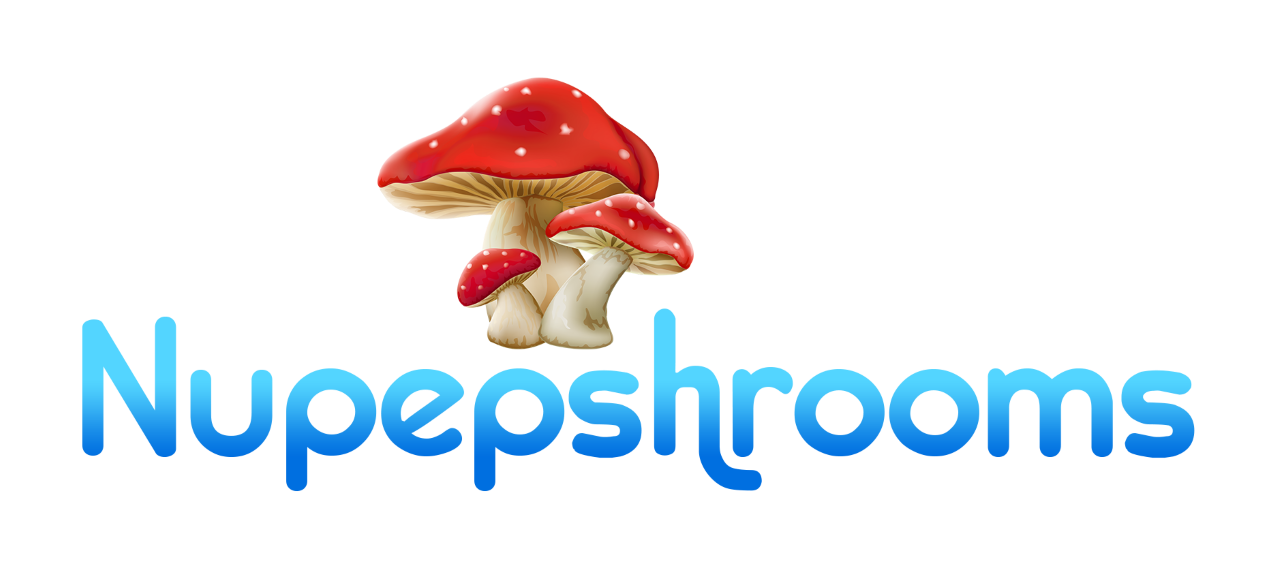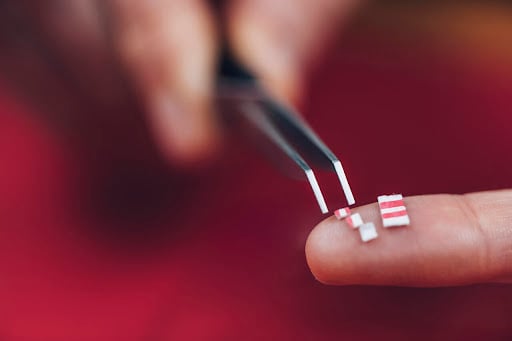Microdose
What Is The Typical Dosage For Microdosing?
The practice of microdosing has gained popularity in recent years, with many claiming its benefits for mental health and creativity. But what exactly is microdosing, and how do you determine the right dosage for you? Microdosing involves taking small amounts of a substance, such as LSD or magic mushrooms, in order to experience subtle effects without the full psychedelic experience.
While there is still much to be researched about the benefits and risks of microdosing, many people report increased focus, creativity, and reduced anxiety. However, determining the appropriate dosage for microdosing can be tricky. Too little and you may not experience the desired effects, while too much can lead to unwanted side effects. In this article, we explore the typical dosages for microdosing.
What Is Microdosing?
Microdosing is the practice of taking very small, sub-perceptual doses of psychedelic drugs such as psilocybin mushrooms or LSD. It has become popular in recent years due to its potential to promote creativity and productivity without the intense trip or psychedelic experience associated with larger doses of these substances. However, measuring a single dose can be difficult outside of a clinical setting.
For example, while a medium-strength recreational dose of psilocybin mushrooms is 2-3 grams and a microdose would typically be 0.3 grams, the potency can greatly vary from batch to batch since it is not regulated. Similarly, LSD is extremely powerful and long-acting, making it important to know exactly what dosage you are taking. Furthermore, psychedelics such as psilocybin and LSD have been associated with physiological tolerance which could decrease any potential benefits associated with microdosing over time.
What is psilocybin micro dosing mushrooms?
Why Do People Microdose?
People engage in microdosing for various reasons, driven by the potential benefits and personal goals they hope to achieve. Here are some common motivations behind microdosing:
Increased Creativity
Many individuals turn to microdosing to enhance their creative thinking and problem-solving abilities. Microdosing is believed to stimulate divergent thinking, boost imagination, and facilitate new perspectives, making it an attractive option for artists, writers, musicians, and professionals in creative fields.
Enhanced Focus and Productivity
Microdosing is often pursued by those seeking improved cognitive function and productivity. Users believe that microdosing can enhance concentration, mental clarity, and productivity, allowing them to better navigate work, study, or other tasks requiring sustained attention.
Emotional Well-being and Mood Enhancement
Microdosing is sometimes employed as a means to improve emotional well-being and promote improvements in mood. People may hope to experience increased feelings of happiness or a reduction in symptoms of anxiety or depression. Microdosing is thought to promote emotional resilience and create a positive shift in a person’s overall mental state, leading to improved mood.
Self-Exploration and Personal Growth
Microdosing is seen by some as a tool for self-exploration and personal development. The altered states of consciousness and heightened introspection that regular microdosing can encourage may facilitate self-reflection, increased self-awareness, and provide insights into personal patterns, behaviors, and beliefs.
Mindfulness and Spiritual Exploration
Microdosing may be used as a way to deepen mindfulness practice or explore spiritual dimensions. Some individuals believe that microdosing can facilitate a greater connection to oneself, nature, or the universe, providing a meaningful and sometimes mystical experience.
Alternative Approach to Mental Health
Microdosing has gained attention as a potential alternative or complementary approach to mental health. Some individuals report positive effects on symptoms related to anxiety, depression, PTSD, and other mental health conditions. However, it is important to note that microdosing should not replace professional medical advice or treatment.
How Does Psychedelic Microdosing Work?
The exact mechanisms underlying the effects of microdosing are still not fully understood, but several theories exist. It is believed that microdosing may impact neuroplasticity, modulate receptor activity, enhance brain connectivity, and influence serotonin function.
However, further research is needed to gain a comprehensive understanding of how microdosing works. Individual responses can vary, and factors such as placebo effects and personal expectations may contribute to the reported benefits. Approaching microdosing with realistic expectations and responsible use is important, and seeking guidance from professionals can provide additional support.
Different Substances Used for Microdosing
Different individuals opt to microdose with different substances, including LSD and psilocybin. These substances are known for their ability to generate positive changes in mood, creativity, and overall well-being when taken in small doses.
Here are three commonly used substances for microdosing:
- LSD: This psychedelic substance is popularly used for microdosing due to its strong effects on mood and cognition. In small doses, users report increased focus, creativity, and positive emotional states.
- Psilocybin: Another popular substance used for microdosing is psilocybin, which is found in certain types of mushrooms. It has been shown to improve mood, reduce anxiety and depression symptoms, and increase feelings of connectedness.
- Cannabis: While not a traditional psychedelic substance like LSD or psilocybin, cannabis has also been used for microdosing purposes. Many users report improved focus, relaxation, and reduced anxiety when using cannabis in low doses.
Overall, the choice of substance for microdosing depends on personal preference and desired effects. Regardless of the substance chosen, it’s important to start with a low dose and gradually increase it as needed while monitoring any potential negative side effects.
Recommended Dosages for Microdosing
The recommended dosages for microdosing psychoactive substances can vary depending on the substance being used and individual sensitivity. It’s important to note that microdosing involves taking sub-perceptual doses, meaning the effects should be subtle and not induce a full psychedelic experience.
Here are some general guidelines for common substances:
- LSD (lysergic acid diethylamide): The typical dose of LSD ranges from 5 to 20 micrograms. Starting with a lower dose, such as 5-10 mg, is often recommended to assess individual sensitivity and response. When microdosing, you should be taking 1/10th of these regular doses. You should start with 1/10th of 5mg and then slowly work your way up to avoid an initial bad trip.
- Psilocybin (magic mushrooms): Microdosing psilocybin involves consuming a fraction of a typical psychedelic dose. A regular dose of the psychedelic drug is anywhere from 1 to 2 grams, so you should start at the lower end and take 1/10th of 1 gram of shrooms during your period of microdosing.
These dosages are approximate and should be used as a starting point for experimentation. Every individual is unique, and factors such as body weight, metabolism, and personal sensitivity can influence the optimal microdose. It’s recommended to start with the lowest effective dose and adjust gradually, paying attention to personal experiences and any potential side effects.
How to Microdose Safely and Responsibly
Microdosing can be a valuable practice when approached with safety and responsibility. Here are some guidelines to help you microdose safely:
- Research and education: Educate yourself about microdosing, including its potential effects, benefits, risks, and best practices. Read reliable sources of information, scientific studies, and reputable books or articles on the topic. Understanding the substances, their effects, and proper dosage guidelines is essential.
- Legal considerations: Familiarize yourself with the laws and regulations regarding psychedelic substances in your jurisdiction. Ensure that you are obtaining and using these substances legally and responsibly.
- Start with a low dose: Begin with a low dose to assess individual sensitivity and response. The goal of microdosing is to achieve sub-perceptual effects, where the dose is not strong enough to induce a full psychedelic experience. Starting low also allows you to gauge any potential side effects and make adjustments accordingly.
- Consistency and schedule: Establish a consistent dosing schedule. Some individuals microdose every few days, while others prefer a specific day of the week. Consistency helps you monitor and evaluate the effects over time and establish a routine that works for you. You should also ensure the activity time is right for you and fits with your daily schedule. Your everyday needs should always take precedence over psychedelic microdosing.
- Maintain a microdosing journal: Keep a journal to record your experiences, observations, and any changes you notice in the period of time during and after microdosing. Track your mood, productivity, creativity, and any other relevant factors. This journal can help you identify patterns, determine the optimal dosage, and assess the long-term physiological and psychological effects.
- Supportive environment: Choose a calm and comfortable environment for your microdosing sessions. Minimize potential stressors, distractions, or situations that may trigger anxiety or discomfort. Engage in activities that align with your intentions, such as creative pursuits, meditation, or spending time in nature.
- Personal evaluation: Continuously evaluate your experiences and assess whether microdosing is beneficial for you. Pay attention to any changes in your mental health, emotional well-being, or overall functioning. If you notice any negative effects or concerns, consider adjusting your approach or seeking professional guidance.
- Professional consultation: If you have any pre-existing medical conditions or mental illness, are taking medications, or have concerns about potential interactions, consult with a qualified healthcare professional before starting microdosing. They can provide personalized advice, assess potential risks, and offer guidance specific to your individual circumstances.
- Community and support: Engage with a community of like-minded individuals who are knowledgeable about microdosing. Participate in forums, online communities, or local groups where you can share experiences, exchange information, and seek support if needed.
- Personal responsibility: Ultimately, it is your responsibility to approach microdosing with caution and respect. Be mindful of your intentions, expectations, and the potential risks involved. If at any point you feel uncomfortable or experience persistent negative effects, discontinue microdosing and seek professional help if necessary.
Shop For Microdoses
Microdosing is a great way to improve your focus and creativity. Nupep Shrooms is dedicated to providing you with the best quality products in Canada. We want our customers to have access to holistic alternatives to harmful prescription medications, which is why we cultivate only the best products. In addition to magic mushrooms, we stock LSD, DMT, and cannabis so that you can find the perfect solution for your needs.

